
Everything in this slideshow
-
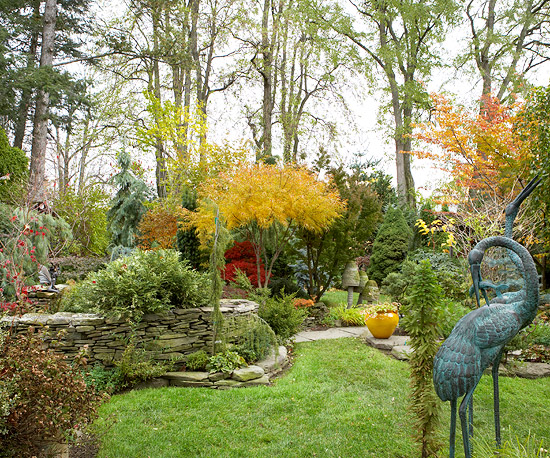
We’ll start our garden tours with a Northeastern garden that’s full of color and texture. It may look huge, but it’s actually just an average-size city lot. Read on to learn how you can transform any small space into a private retreat filled with fall color.
-
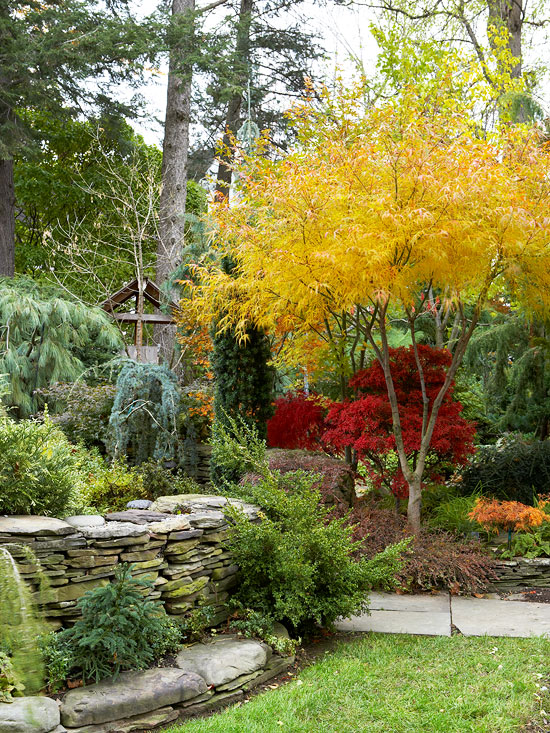
Screen Views
Add depth and mystery to your landscape by using large shrubs and small trees to block views. Because you can’t to see the entire yard from one spot, you create the sense that your garden goes on and on. Here, a brilliant golden Japanese maple makes you want to check out what’s on the other side of it.
-
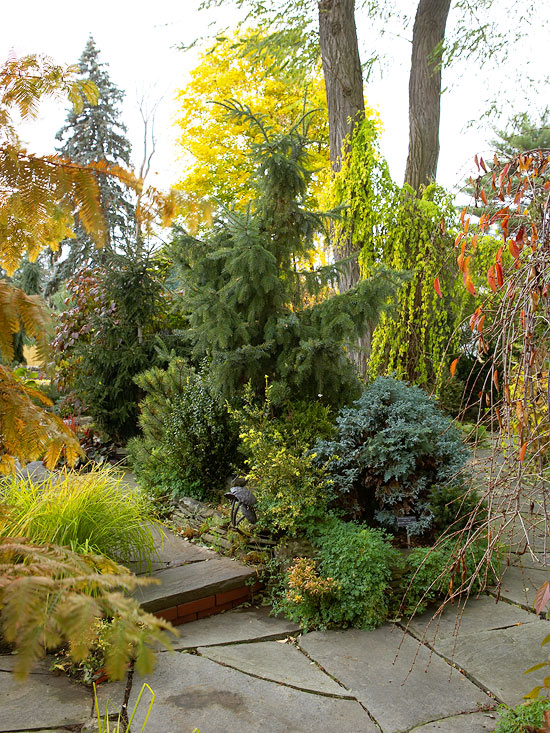
Include Evergreens
Select a variety of evergreens to plant around the edges of your yard. They’ll give you year-round privacy and provide a beautiful backdrop for other trees, shrubs, and flowers that show off brilliant fall color.
Test Garden Tip: Choose cultivars that mature at an appropriate size for your yard. Compact Austrian pine only reaches about 15 feet tall and 8 feet wide, for example. And fernspray false cypress grows 10 feet tall and 4 feet wide. Both will give you privacy without taking up your entire yard.
- Learn about some of our favorite evergreens.
-
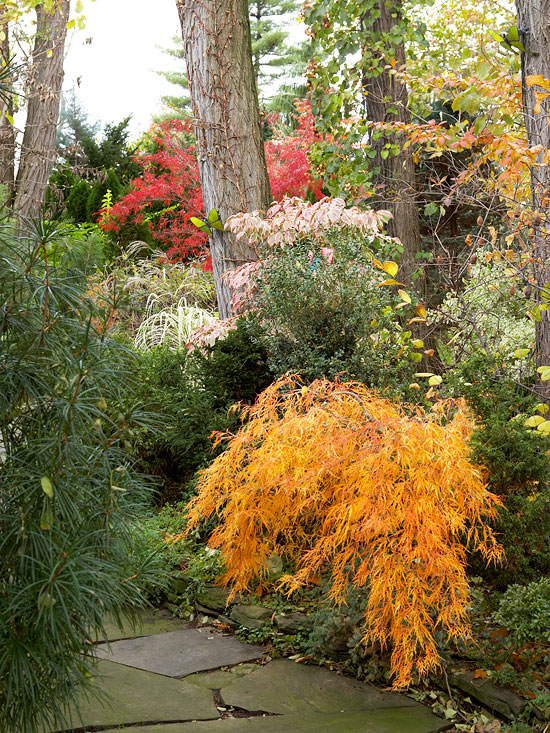
Pay Attention to Plant Habits
Plants develop different shapes as they grow. Some have a narrow, upright look; others are mounded; and others gracefully weep like this golden ‘Viridis’ Japanese maple. Combine plants with various habits to make your landscape more intriguing.
-
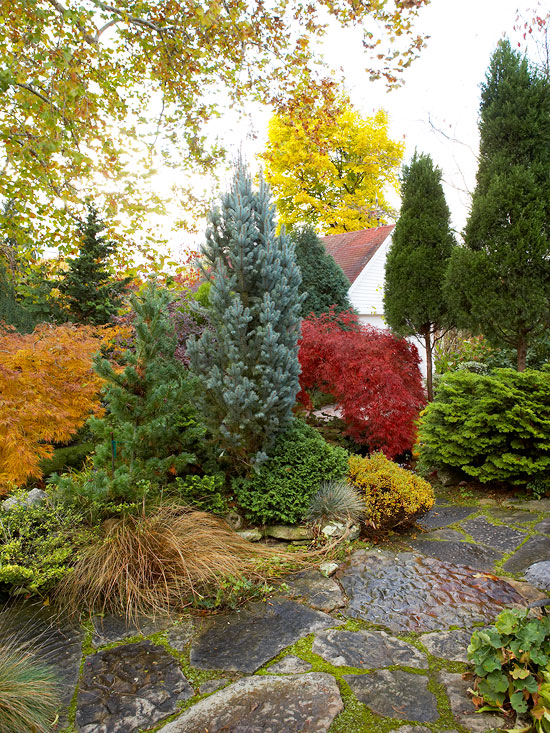
Repeat Plant Shapes
Build a theme in your landscape by repeating a particular plant shape. Here, an upright columnar white pine and blue spruce both echo the tall, narrow arborvitae in the background.
Test Garden Tip: To add interest, consider evergreens in various colors. Combining the blue-green pine, silvery-blue spruce, and dark green arborvitae creates another layer of attractiveness.
-
Fall Power Perennials
Get a garden that shines through the first frosts with these won’t-quit fall favorites.
-
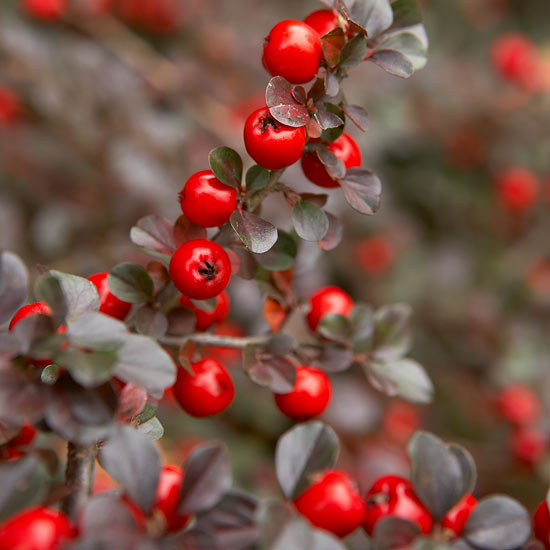
Add Great Groundcovers
Reduce weeds and create a carpet of color with ground-hugging plants that put on a fall show. For example, this cranberry cotoneaster offers dazzling red fruits with attractive purple-red fall color. Giving yourself a ceiling of fall leaves above and a blanket of color below will make your garden more interesting.
- Check out more beautiful, easy-to-grow groundcovers.
-
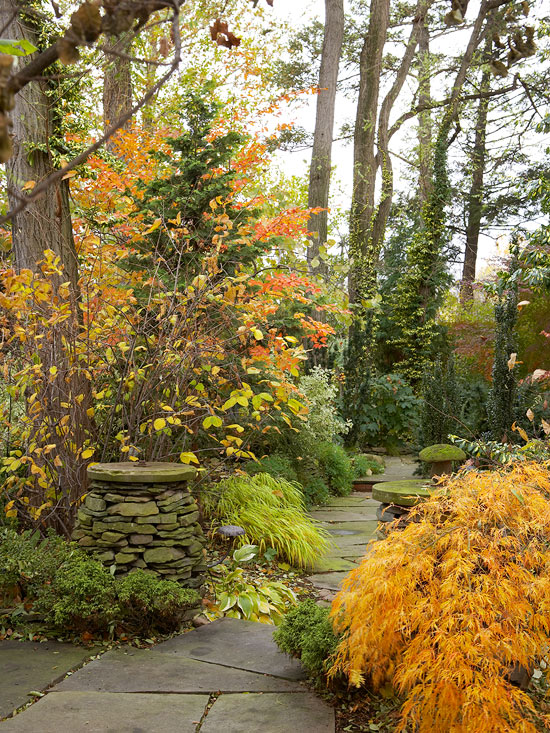
Include Structure
A great garden includes more than just plants. Incorporate a structure, such as an arbor or pergola, a fence, or a stone retaining wall. Choose a material that complements your garden style and fits within your budget.
Test Garden Tip: Stone is a common choice because it’s maintenance-free and fits well with a wide variety of landscaping styles. Select stone native to your area for a more natural look. Or add extra appeal by including various types of stones.
-
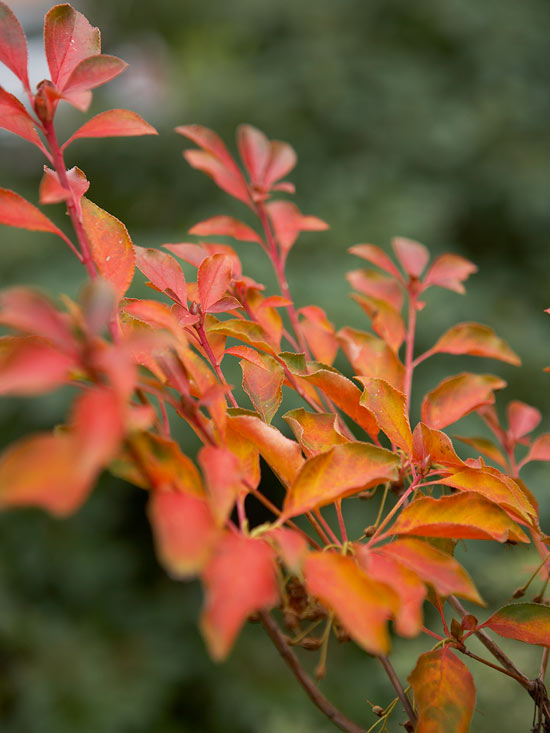
Grow Multiseason Plants
Pack more bang into your yard by growing plants that look great in various seasons. Pagoda dogwood, shown here, offers white flowers in spring, clusters of blue berries (loved by birds) in summer, wonderful fall color, and a unique branching habit.
Test Garden Tip: Great shrubs for a multiseason show include ninebark, viburnum, fothergilla, and reblooming hydrangeas.
- Learn more about pagoda dogwood.
- Learn more about ninebarks.
- Learn more about viburnums.
- Learn more about fothergilla.
- Learn more about hydrangeas.
-
Get More from Your Mums
Learn how to make your mums the center of your fall garden.
-
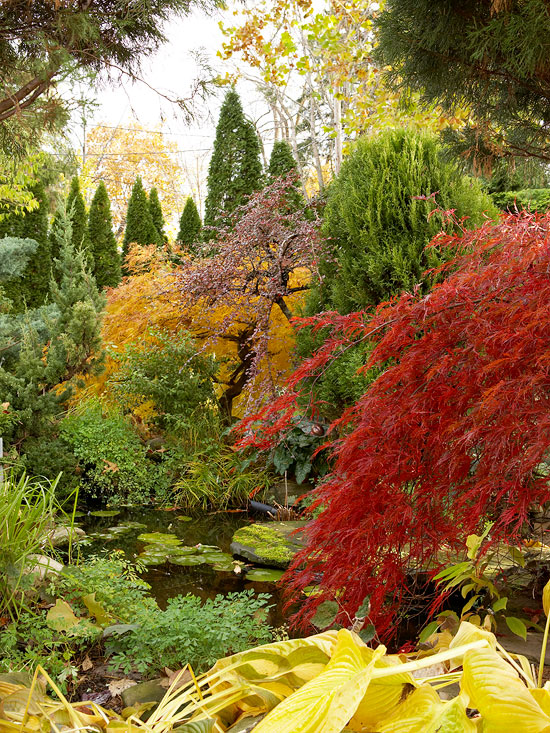
Appeal to Several Senses
Use a water feature in your landscape to help filter out street noise and make your yard feel more secluded. Take advantage of the water’s reflective quality by planting Japanese maples or other trees and shrubs with a good fall display nearby for double the color impact.
- Get more water garden ideas here.
-
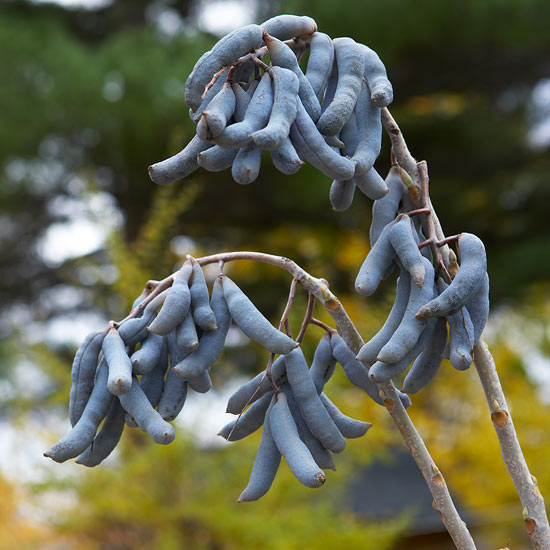
Pick a Cool Plant
When planning your garden, be sure to include at least one unusual plant such as this blue sausage fruit (Decaisnea fargesii), which offers unique and edible fruits. A large shrub or small tree, it’s great for adding privacy and making visitors ask “what’s that?”
-
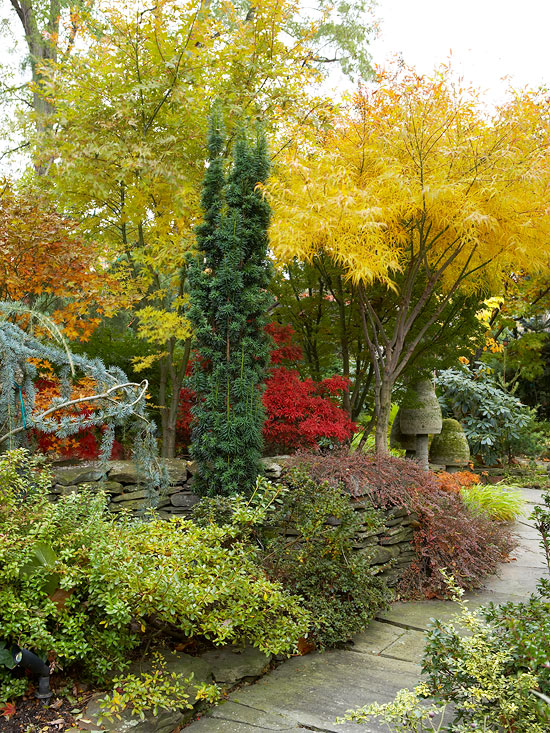
Layer Plants
Use nature as your guide when planting. For example, rather than creating a bed where everything grows 2 feet tall, choose a number of varieties that grow to different heights. This allows you to get more in a small spot and a design that feels natural.
-
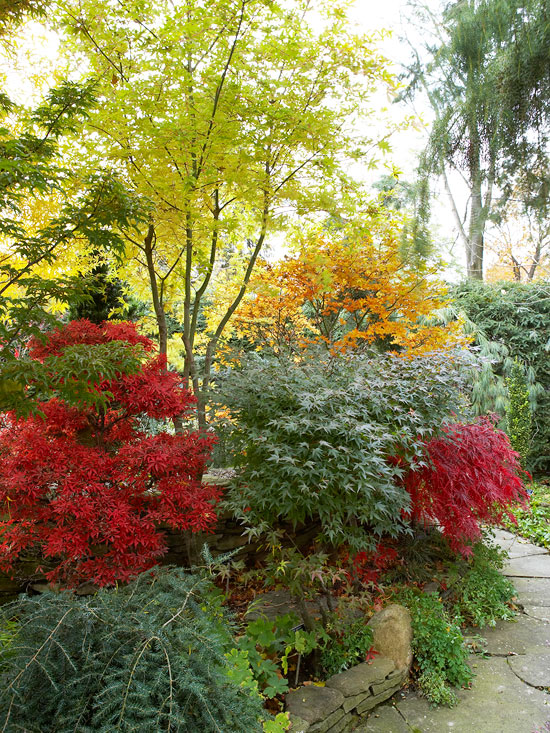
Consider Context
A weeping hemlock, shown in the front left corner of this border, might get lost among other evergreens. Accenting it with red Japanese maples, however, allows it to shine while adding texture to the landscape.
-
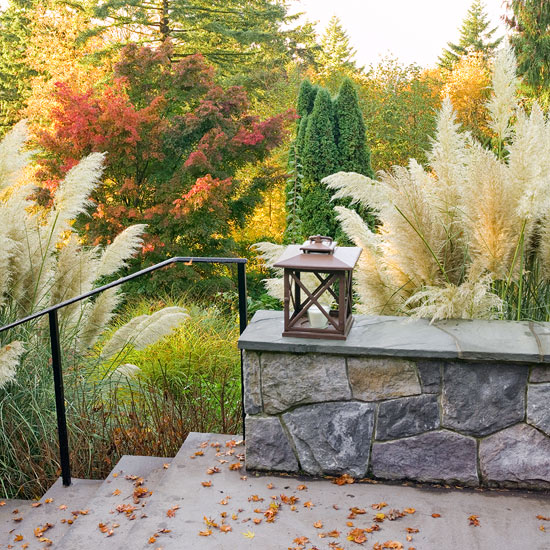
Now we’re jumping 2,700 miles away to a garden in the Pacific Northwest. This landscape also features a series of intimate spaces, though it’s set on a steep hillside and features a very different set of plants. Read on for more fall landscaping secrets!
-
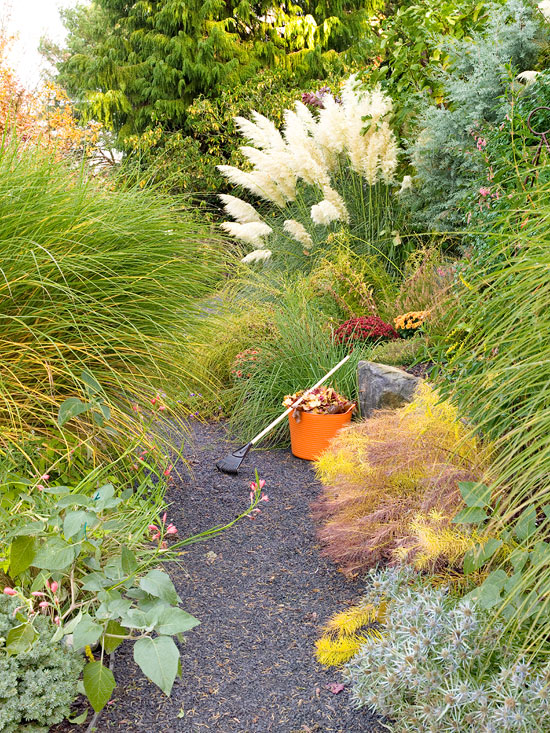
Create Texture
Ornamental grasses are a popular choice for adding fall and winter interest. Enhance their graceful texture by growing other plants with a delicate look, such as silvery sea holly flowers and golden bluestar foliage.
- See some of our favorite ornamental grasses.
-
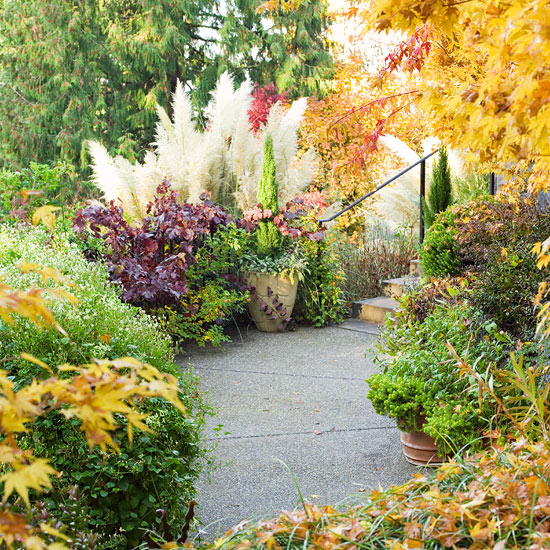
Contrast Light and Dark
You can count on opposites to make a statement, especially when they’re dark and light. So play up the drama of silvery ornamental grass plumes with deep-color foliage, such as that of purple-leaf grape.
Test Garden Tip: Other plants with stunning dark foliage include Diablo ninebark, purple-leaf filbert, ‘Velvet Cloak’ smoke bush, and ‘Black Lace’ elderberry.
- Learn about more shrubs with colorful foliage.
-
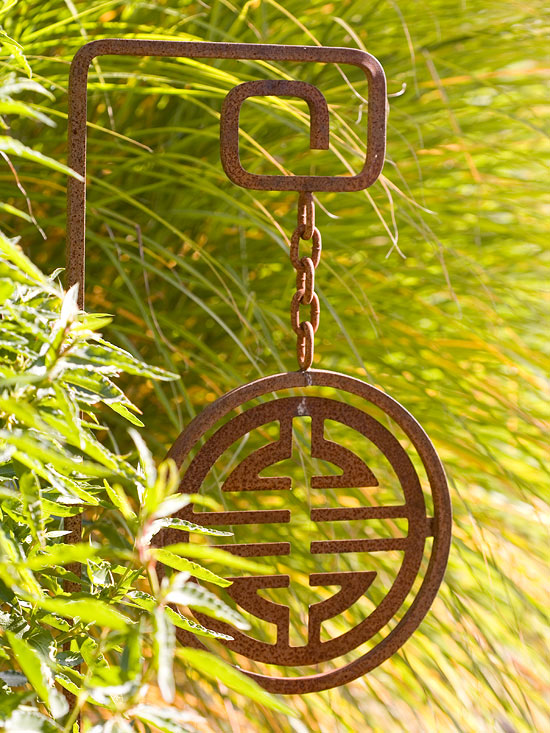
Decorate with Accents
Add a few accents to your landscape that reflect your personality. This iron medallion waves in the wind and gives a large patch of ornamental grass an intriguing artistic element.
Test Garden Tip: Ornaments such as this can also act as hose guides — place them at the edge of your border to keep your watering hose from crushing plants as you pull it around corners.
-
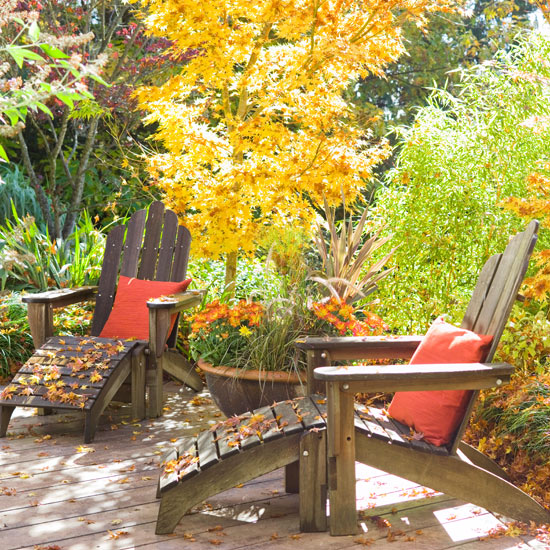
Leave a Spot to Relax
Take advantage of wonderful fall days by setting up a seating area where you can sit back and enjoy your landscape. One great place is on the east side of a favorite tree — that way you can enjoy the effect of the sun shining through the leaves while you sit in the shade.
-
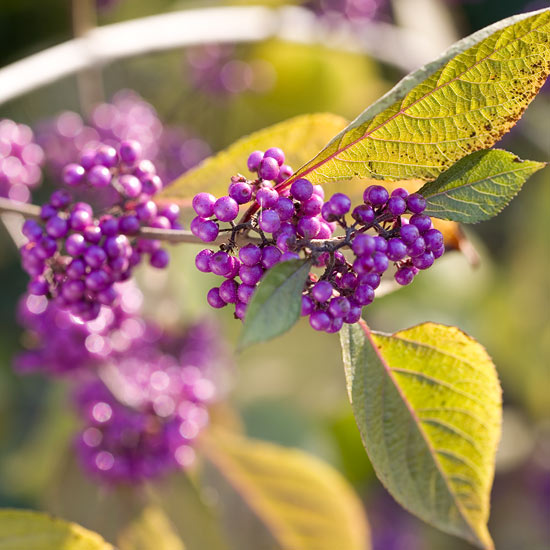
Pay Attention to Detail
Sometimes subtle details in your garden are most effective — not everything has to be big and bold. For example, add a beautyberry or two. This shrub produces small clusters of amethyst-purple fruits in fall. You won’t notice them from across the yard, so it’s a great surprise when you see them up close.
- Learn more about beautyberry.
-
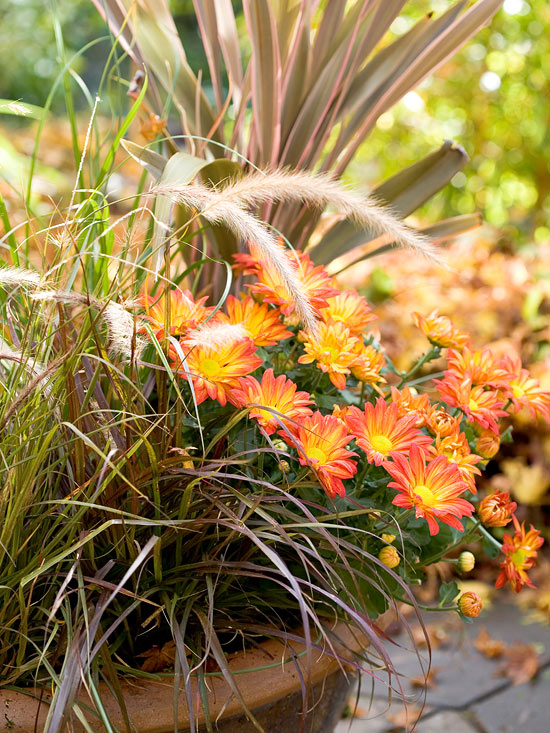
Add Color with Containers
Perk up dull spots in your garden with containers. Filling them with grasses, mums, asters, and flowering kale are easy ways to put on a show that looks good for weeks.
- Get ideas for making great fall containers here!
-
Amazing Asters
Try one of these fall superstars that add color and texture as the rest of the landscape fizzles.
-

SOURCE:http://www.bhg.com/gardening/landscaping-projects/landscape-basics/fall-landscaping-ideas/